| Early Spring Date: | March 15 |
| Late Spring Date: | May 27 |
| Best Dates to See in Spring: | April 11 - May 20 |
Spring: The Yellow-rumped Warbler (aka "butter-butt") is by far the most common warbler species at Monticello Park. You are likely to see quite a few on any given day between the middle of April and the middle of May. They generally breed in Canada and the northern United States.
Fall: The most abundant warbler during the spring is not common during fall migration. An average of only about 6 or 7 Yellow-rumped Warblers are recorded each fall at Monticello, and during a few years, none have been found.
Where to See Them in the Park
Yellow-rumped Warblers are seen all over the park and in all sections of the trees. They often go into the stream and sometimes take long baths. You frequently see them hawking insects. When large numbers are in the park, some Monticello birders become impatient when trying to find other species of warblers among the Yellow-rumps.
Physical Description
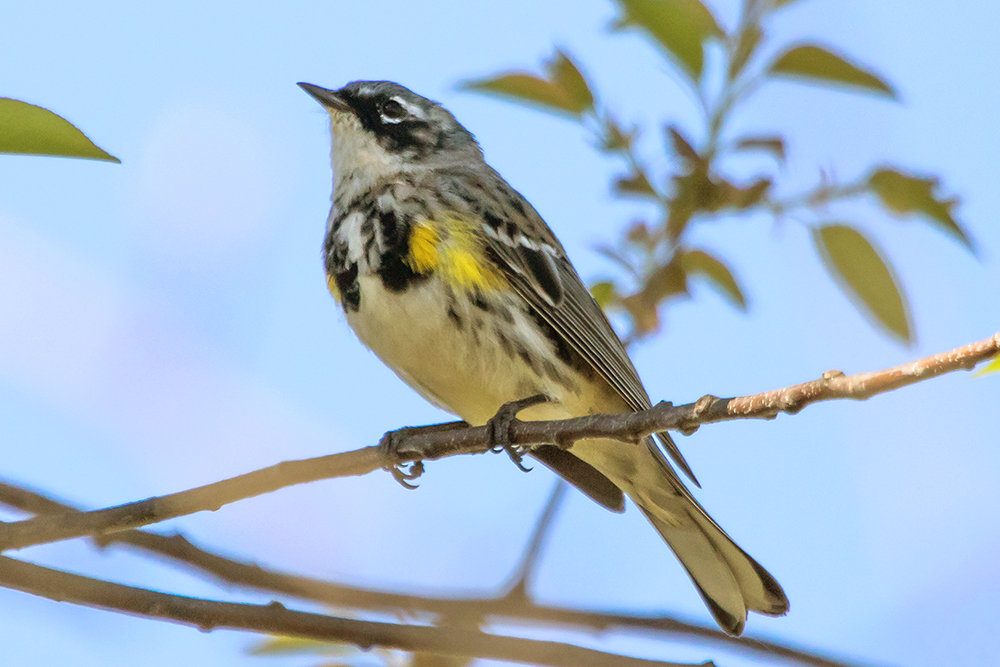
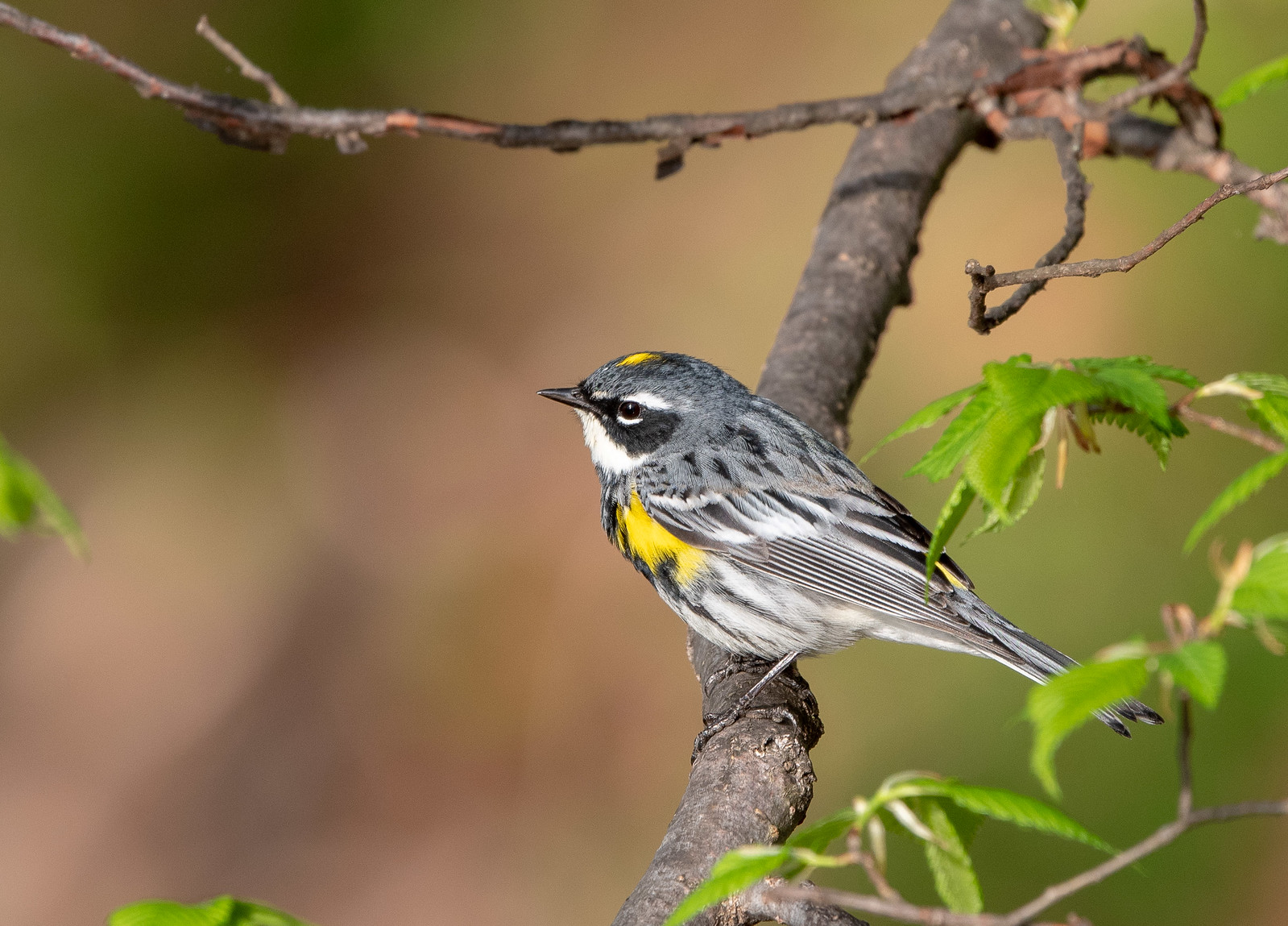
If Yellow-rumped Warblers were not so common, birders might be happier to see them. The handsome males have a bluish-gray back with black streaks. They have a white throat and two white wingbars. In addition to the yellow rump, they have yellow on the flanks and a golden crown. They have a black mask and white crescents above and below the eye.
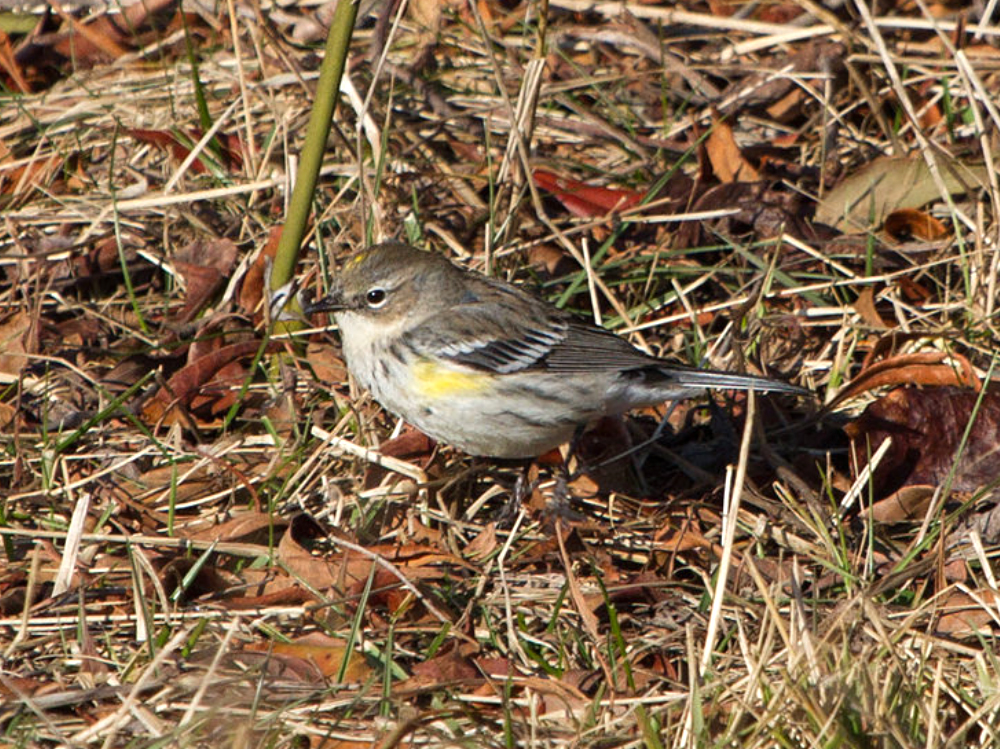
Females look like a duller version of the male. Their plumage has a lot of variation, ranging from brownish to grayish. They have a trace of a yellow crown and some yellow on the flanks.
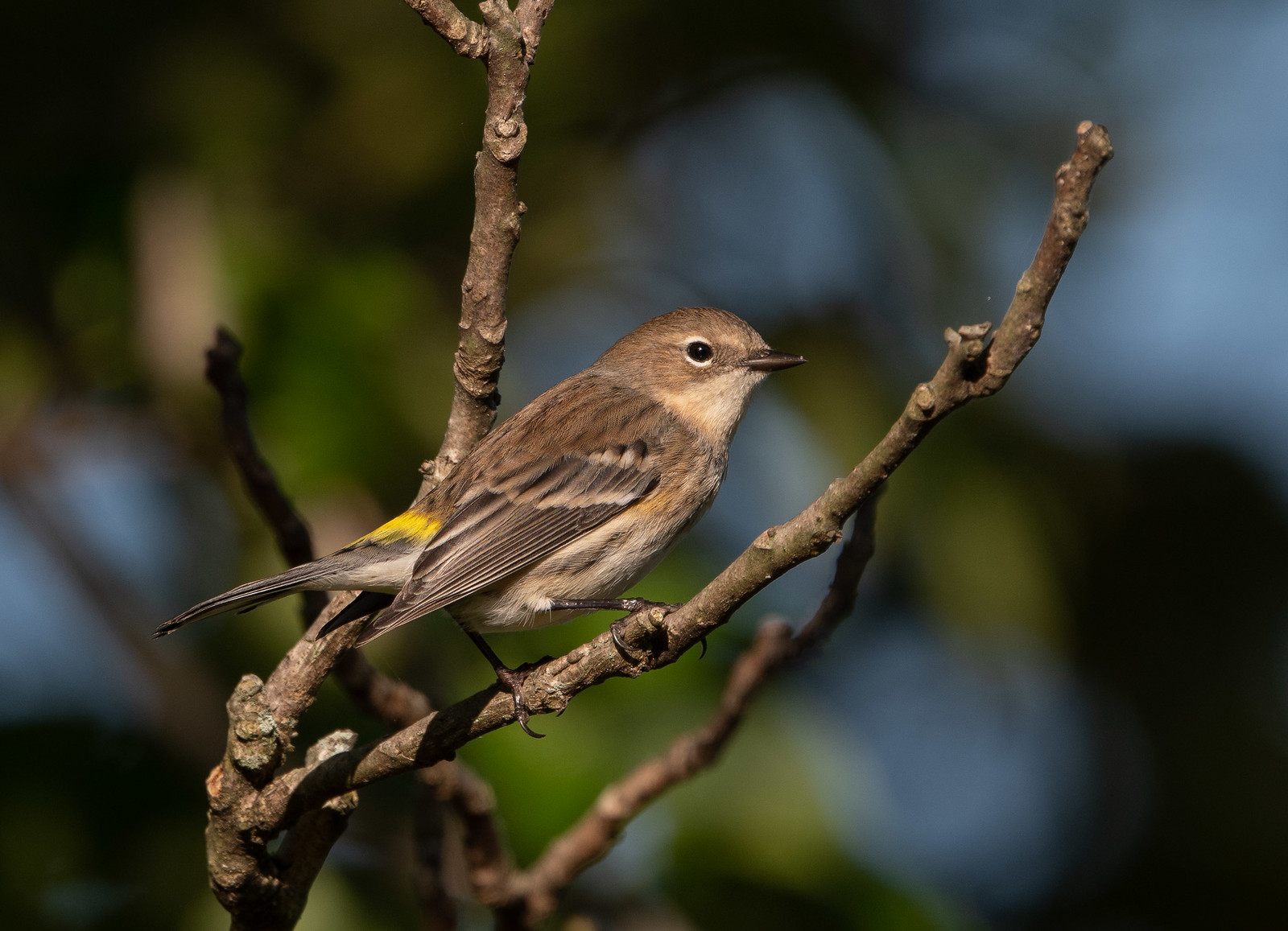
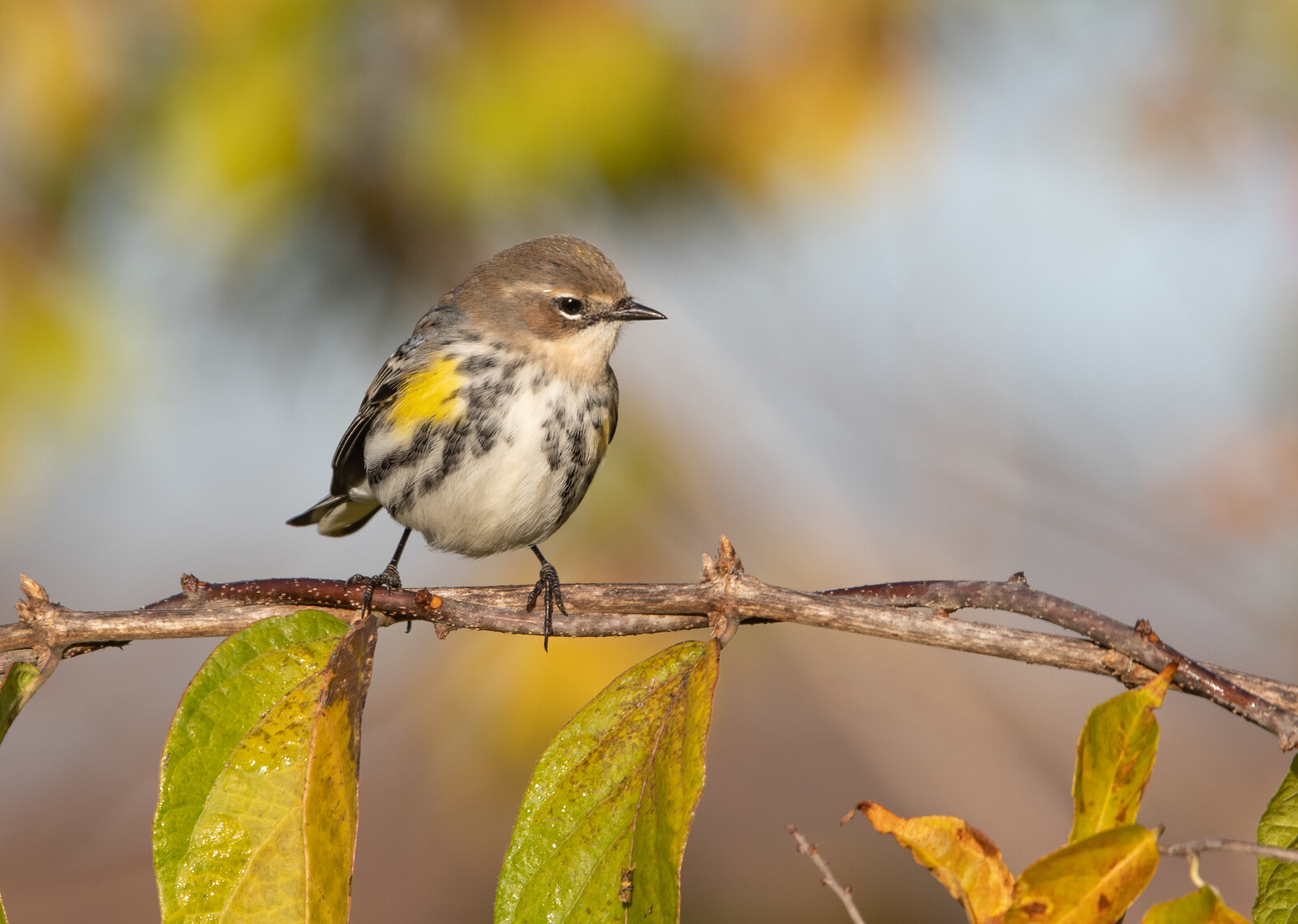
Fall: Some fall adult males look like spring adult females. Some fall first-year females are very dull. But all other fall birds are so similar that they cannot be separated by age or sex.
Vocalizations
The song of the Yellow-rumped Warbler is a loose two-part trill. Birders at Monticello hear it often.
Hear the vocalizations of the Yellow-rumped Warbler.
Notes
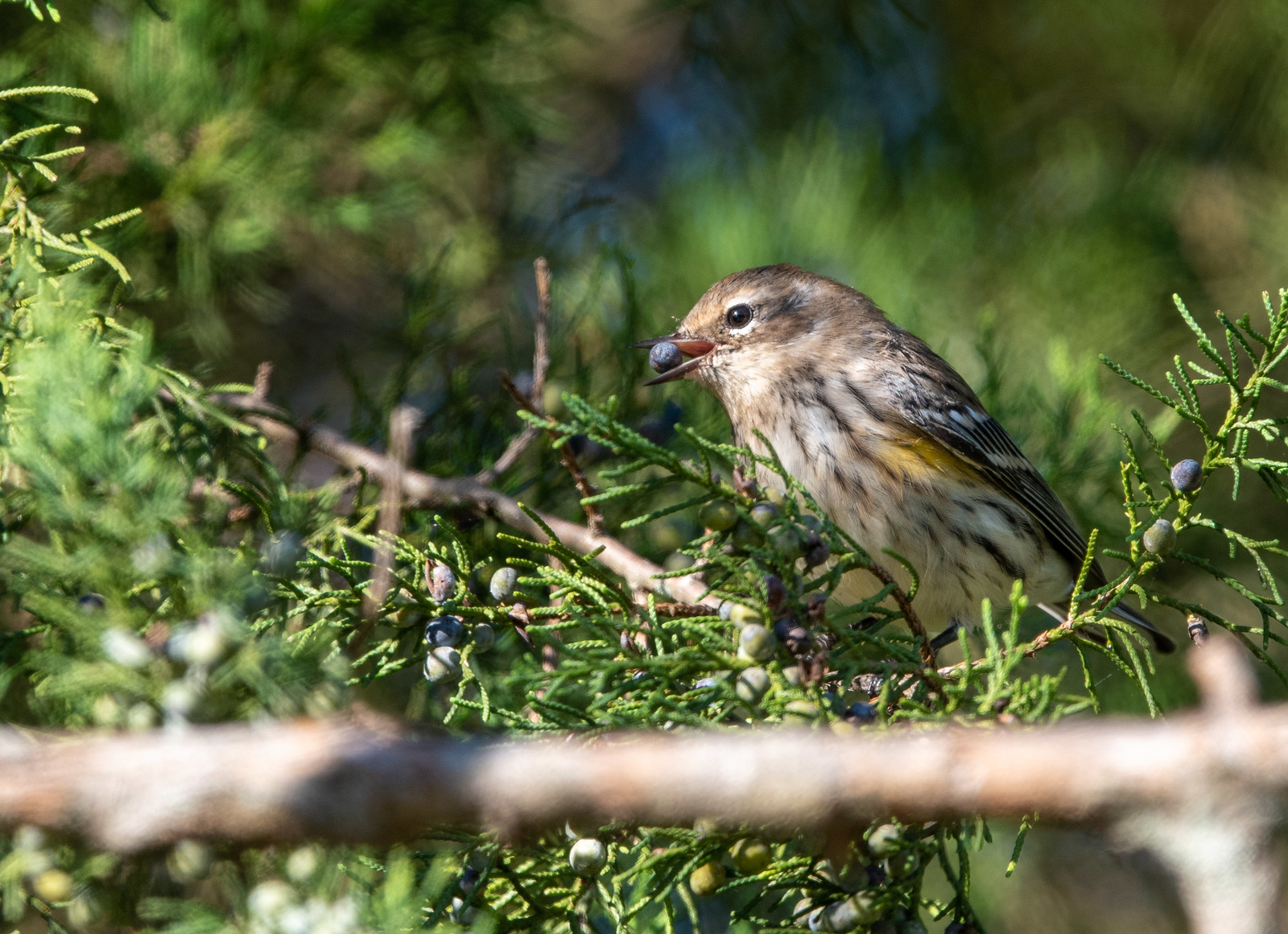
The Yellow-rumped Warbler in the eastern United States used to be called the Myrtle Warbler before being lumped with a western species called the Audubon's Warbler. The Audubon's Warbler has a yellow throat rather than a white one. The eastern birds are able to spend the winter in the Washington Area, because Yellow-rumps are the only warbler species capable of digesting wax-myrtle berries, which is the basis for their former name. They also eat berries from poison ivy, poison oak, and Virginia Creeper, and they sometimes visit bird feeders.
Origin of Names
Common Names: Yellow-rumped from the plumage. The New World Warblers were named for their similar appearance to European warblers, to whom they are not related. Most of the New World warblers do not warble (sing continuously with notes that change frequently).
Genus Name: Setophaga means moth eating.
Species Name: Coronata means crowned, from the male's golden crown.
Yellow-rumped Warbler video footage
Return to the Index
